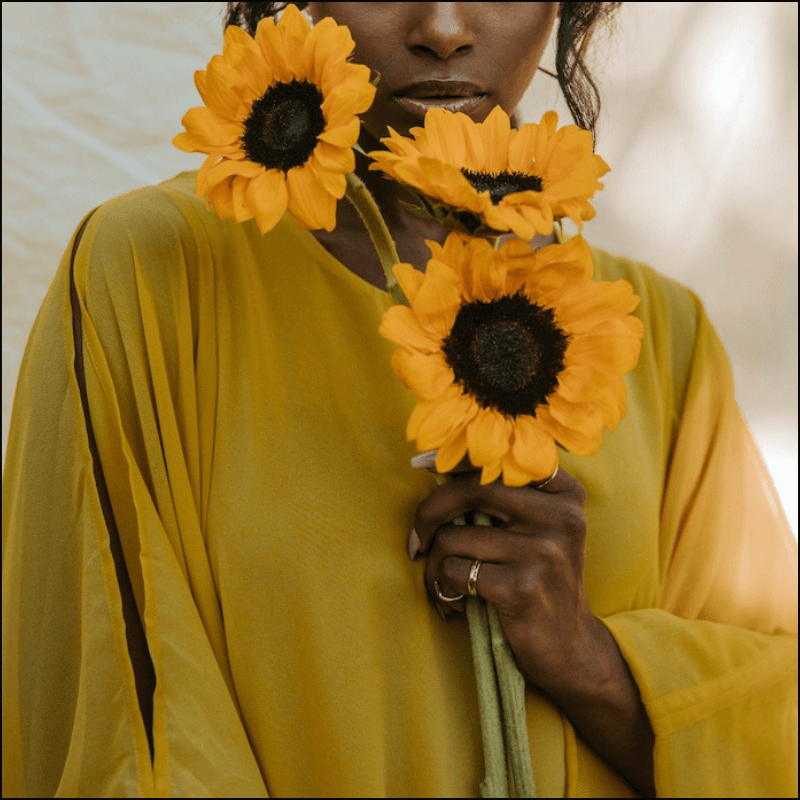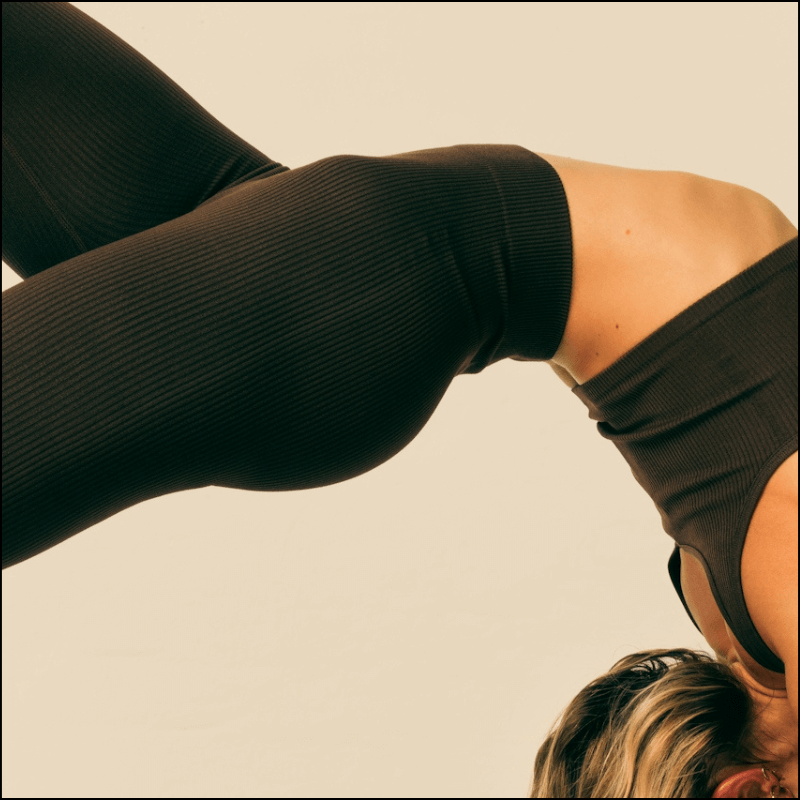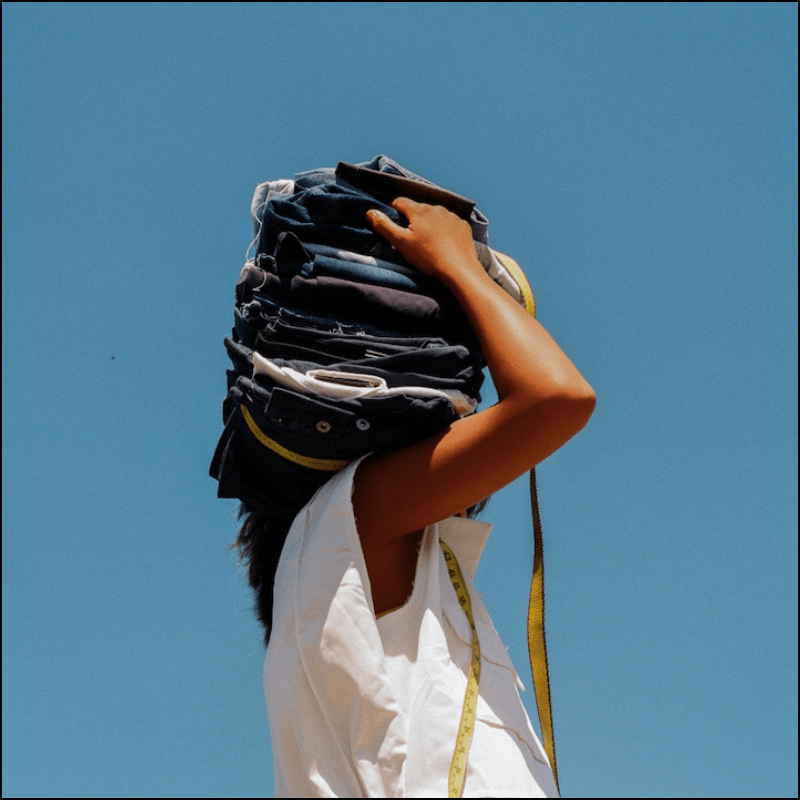How To Design Your Own Fabric
Custom fabric prints are one of the best ways to help your brand stand out from all the others. But figuring out how to get your designs out of your head, drawn by an artist, and printed on fabric can be hard to navigate. This post will teach you everything you need to know about how to design your own fabric.
BUT, BEFORE WE GET STARTED…
Have you heard about the super secret document that everyone in the fashion industry uses, but no one is talking about? Probably not. That is because you can't find it on Google or Instagram (believe me, I've tried).
It's a form I have used for over 13 years at every job I have ever had. Literally everyone from brands to fabric suppliers use it, but you can't find it anywhere publicly.
The best part? It can cut your sourcing time in half, and save you tons of money in product development! This is the kind of info consultants charge the big bucks for. And, I'm giving it away for free until the end of the month.
So, get ready to make fashion startup life a whole lot easier, and GRAB YOUR FREE DOWNLOAD OF THE NOT SO SECRET SOURCING DOC HERE
If you are trying to learn how to design your own fabric, this post is for you!
WHAT YOU WILL LEARN
- How prints can stop people from stealing your designs
- Why using prints are great for small brands
- Where to hire print designers
- How to communicate your fabric print design
- The print development process - from computer file to fabric
- Watch out for these common printing errors
- Color separating
- Strike of and color matching
- Color drag
- Color splatter
- Fuzzy pattern
- Stop mark
- Colorfastness
- Sustainability considerations of fabric printing
- Additional resources
- Tools to DIY your own print
- Where to have your designs printed onto fabric
WHY DESIGN YOUR OWN FABRIC PRINT?

Print designs by Amita Nair
Back in the day, the 1970’s to be exact, Elie Tahari, was known as the king of the pants. Tahari had mastered the art and fit of pants so perfectly that every brand out there bought a pair and knocked them off. It sounds unfair, but it was, and still is, totally legal.
That’s right. Silhouettes, in general, are free for anyone to use. Many brands design entire lines by buying clothes they like the fit of, and then creating knockoffs in overseas factories. Diane Von Fürstenberg’s signature wrap dress? It’s considered public domain. That is why, although being credited for inventing the iconic style, tons of other brands make the exact same dress. And, there is nothing she can do about it.
So, what’s a brand got to do to not get knocked off?
Fashion’s answer is prints.
They are, in most cases, considered intellectual property. But, don’t get too excited. Not all prints are eligible. Simple geometrics like dots, stripes, plaids, etc, are all considered public domain and can not be copywritten. The only brand that has ever been successful at copywriting a plaid is Burberry. Their signature print is theirs and theirs alone. Anyone that uses it without permission (read license) is subject to a lawsuit.
So while Diane can’t copyright and exclusively sell the dress that made her famous, she can copy right the prints that she puts on them. This way, her exact designs and overall look are non-replicable.
In a world where fashion is becoming faster and faster, and brands cross the line between “inspired by” and straight-up copying (thanks diet-prada), prints offer some protection.
WHY PRINTS ARE GREAT FOR SMALL BRANDS

Designs by Victoria Bright
Prints can save brands both time and money.
When you decide to print your own fabric for a collection, all you need to do is choose just one fabric. And, believe me, having to source only one fabric, instead of ten, can cut sourcing time significantly.
You can then use different prints to create variations in the designs. Even if you have the same exact dress in the same exact fabric, a hot pink flower design is going to give off a very different vibe than a scarlet tartan.
Prints can also save brands money.
This goes back to only using one type of fabric. Instead of buying 100 meters of 10 different fabrics, a brand can now buy 1000 meters of one fabric. And, as you probably already know, the bigger the MOQ (minimum order quantity), the lower the price.
WHERE TO HIRE PRINT DESIGNERS

Designs by Pascale Dilger
Don't think you have the skills to design your own fabric print?
That’s ok. The fact is, most people who are starting brands aren’t artists. And, that’s ok. You don’t need to know how to draw or even sew to start a fashion brand. But, you do need to know how to hire the right people.
One of my favorite places to hire designers is Fiverr. Fiverr is a global online marketplace that supplies freelance services. It is the perfect place to hire someone to help you design fabric. I love Fiverr because there is a large talent pool, you can get competitive rates, and the site is really good about refunding your money if the job you want isn’t done correctly.
HOW MUCH DOES IT COST TO HIRE A PRINT DESIGNER?
That’s kind of a hard question to answer.
It depends on the experience of the printer, and the complexity of a print.
It also depends on if you plan to own all the rights to the print or not. Some brands work out a deal where the artists owns the rights and they pay a licensing fee. This tends to be cheaper than just buying the print outright.
On average, prints can range anywhere from $20-$500.
Pro Tip → Look At Their Portfolio!
And, I mean, really look at it.
Don’t just look at the 5-star reviews. A designer could have 5 stars, but that does not mean they will be able to create what you want. If you don’t see the type of designs in their portfolio that you are looking for, they probably aren’t a good fit.
Let’s say you want a watercolor logo. And your friend has a great designer they love working with. But, everything in their portfolio is black and white cartoon comic book sketches. Well, I can almost guarantee you are not going to get the logo you want. Even though you hired a great artist with great reviews.
COMMUNICATING YOUR PRINT DESIGNS AND MORE

Artwork by Ulrikajarl
Once you find your designer, you need to do your due diligence.
I have been a mediator between quite a few brands and graphic artists, with the brands furious that the designer could not bring their vision to life, and the artists exasperated by the brand's fickleness. 99 times out of 100 I have to say it's the brand's fault they are not getting what they want.
You need to know how to communicate your vision. One way to effectively communicate your vision is to know key styles and fabric design terms.
Two of the most important ones are art medium and style.
ART MEDIUM
Knowing the desired art medium can better control the outcome of the print. The art medium is the substance used to create an art piece (these can all be duplicated digitally using Adobe Illustrator or Photoshop). Print art medium options include watercolor, ink pen, colored pencil, charcoal, oil paint, acrylic paint, mixed media, chalk, gouache, block print, and vector.
For example, the exact same artwork made with colored pencils will look very different made with oil paint.
STYLE
You also want to tell your artist what type of vibe you are going for.
Some terms to describe art style include: whimsical, abstract, geometric, minimalist, collage, realistic, freeform, retro, modern, playful, elegant, simple, or hand drawn. Knowing the art style can help you communicate that exact vision.
For example, if you want a flower print a hand-drawn charcoal sketch is going to look a lot different than a block print geometric flower.
Pro Tip → Don’t Show Up With Nothing!
Before you start talking to a print designer, you should, at the very least, have a color palette, and a few references of images that you like.
The color palette will help direct them with what colors to use, and what type of mood and vibe you are going for.
And, the reference images will give them an idea about what type of style you like.
The takeaway? When working with designers, always try to show, instead of tell.
THE STRIKE-OFF PROCESS

Surtex Show - a great place to meet professional print designers
This is where your fabric design goes from digital to fabric.
After the graphic artist creates your print and you are happy with it, you will pass that on to your fabric supplier. Always make sure to be clear with your supplier about what type of format they need the file in. File options that can be uploaded include jpg, pdf, svg, and png.
Once the factory receives the print file, they will begin the strike off process. A strike-off shows what your print will look like in real life on the fabric you choose. It is also an opportunity for you to give feedback, and for the factory to color match.
A strike-off is a tiny square of fabric that has part of your print on it. Sometimes factories will give you 2 or 3 strike off of the same print with small variances. They do this because prints on fabrics never look exactly like prints on a computer screen. So, it helps to have different variations to choose from.
Once your strike-off is approved, your fabric will move into production. But, you aren't done with approvals. It is important to ask for a cutting from the first few meters of the production. This will ensure that all of your colors match, that the screens are registered, and that everything else that could possibly go wrong has not. (PS, in just a minute, I am going to explain more about all of these things).
And, one last thing. Never, I repeat, never allow a factory to start cutting your fabric before you have approved your production lot.
Pro Tip → Become A Hoarder!
Remember to save all of your strike-offs.
Sometimes things go wrong in production. And, maybe a color does not come out the way it should have. When this happens you will go back to your strike off and show the factory how the approval is different than the production, and they will have to fix it.
If you don’t have the swatch you can’t do this. And, no, photos don’t count. That is because photos can be manipulated. To be clear, you need to have the original swatch to be able to argue production mistakes.
PROBLEMS TO LOOK OUT FOR

Designs by Picnic Art Collective
Here are 6 of the most common mistakes that happen during color printing. Remember to not just check your strike offs for these issues, but also your production lot before the cutting and sewing process begins.
- Color Drag: When the color is smudged before it has time to dry.
- Color Splatter: (This is just what it sounds like.) Splatters of color that don't belong there.
- Fuzzy Patterns: when the edges of fabric patterns are not sharp, and lines look fuzzy or blurred.
- Off-Register: With screen printing, each color gets its own screen. And, when the scenes that make up the design are not aligned properly, the print looks trippy. Think of someone trying to stamp a piece of paper in the exact same spot, but missing.
- Stop Mark: A thin line through the width of the fabric, usually created from the printing machine pausing in the middle of printing your fabric.
- Colorfastness: Don’t, I repeat, don’t wash a strike off to test for colorfastness. I saw another “expert” give this advice, and it is sooo misguided. That is because strike-offs are teeny tiny pieces of fabric, and are not processed properly. Strike-offs, if tested for color fastness, will almost always fail. Instead, ask your supplier to give you a fabric report from a professional testing lab. For this to be done, you usually need to supply the lab with anywhere from 3-10 meters of fabric.
A NOTE ABOUT THE SUSTAINABILITY OF FABRIC PRINTS

Designs by Amelie Mancini
Fast fashion loves prints.
By using different textile prints, a brand can use 1 or 2 fabrics throughout their entire line and make every style look different. Maybe one fabric is a dark flower and another a bright polka dot. You get the idea.
They can buy fabric for the entire year! Commit to really high MOQs (read, better pricing), and still bring freshness to their customer season after season.
H&M is notorious for this. If you ever shop there, pay attention. The same fabric is used season after season, while the silhouettes, colors, and print designs change.
FAST FASHION LOVES PRINTS
Prints allow fashion houses to take the same old thing and resell it as something new season after season.
The thing is, because prints add freshness, they are also designed to go out of style very quickly. Encouraging people to keep shopping for the same thing but in a different color every season. Leading to more consumption.
This is also one of the reasons that sustainable fashion tends to be anti-prints. A solid neutral color dress, with a classic silhouette, is going to get a lot more years of wear than a super trendy item that goes out of style in 3 months.
So, prints and slow fashion are kind of an oxymoron.
But, recently, I have been seeing more and more sustainable brands introducing prints into their lines. And, I am loving it. I think we are all starting to get a little bored in the sustainable fashion community with beige on beige on beige - shoutouts to the hysterical satirical Insta account The Sad Beige Lady.
Generally, the current trend in sustainability, is that the prints brands are choosing are classic and will most likely not go out of style, like checks, dots, and neutral flowers.
I love the brand Farm Rio, but one of the problems with their amazing prints is that it dates the clothing. You know exactly what season a dress came from based on the print.
Whereas, with a line like Burberry, it can be very hard to tell if the garment is from 2009 or 2019.
In my opinion, I think if brands create prints that are not designed to go out of style, and are more classic, there is nothing wrong with using them. And, it’s a lot more fun for the customer!
ADDITIONAL RESOURCES AND TOOLS

Artwork by Girl Gang Design
The best online resources that will help you design your own fabric prints quickly and easily. You can also use these as a tool to help visually explain your ideas to the designer you hire.
- How to make your own fabric print with fabric design software
- Pattern Ninja - comes with an image library, or you can upload your own images to add to your print design
- Patternizer - an online tool to help you design stripes and check patterns.
- Jasper Art - AI artwork generator - for those with absolutely zero artistic ability
- Pattern design apps
- Repper - a simple, yet very powerful app, that allows anyone to design their own geometric print designs
- Printed fabric suppliers
- Spoonflower - dozens of fabrics from natural cottons, to synthetic polyester athletic materials to print your own fabric designs on. The best part? You can print as little as 1 yard of fabric!
LET ME KNOW YOUR THOUGHTS!?
Did this post help you learn how to design your own fabric prints?
Are you going to use prints for your brand? If you are, what type of prints do you plan on designing?



Comments